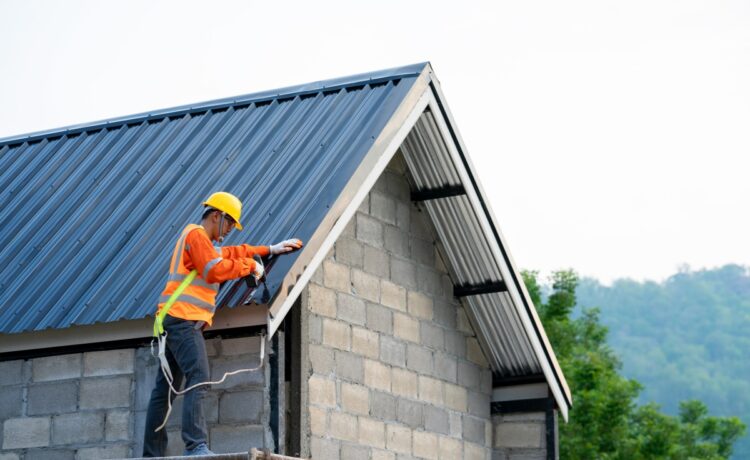Roofing requires not only physical strength and endurance but also a well-planned approach to safety and efficiency. A roofer’s ladder serves as more than just a way to reach the roof — it becomes a vertical “toolbox,” providing easy access to everything needed for a safe and organized job. By thinking of each ladder rung as a station with essential tools, materials or safety checks, roofers can maximize productivity while minimizing hazards.
The base of the ladder is the foundation for any roofing project. Proper ladder positioning is crucial; an optimal 4:1 angle ensures stability and reduces the risk of slipping. A ladder positioned too steeply or too shallowly can become unstable, endangering the worker. For additional safety, ladder stabilizers are an excellent investment. These stabilizers spread the ladder’s weight over a larger area, creating a steadier base even on uneven surfaces.
In addition, roofers should wear appropriate safety gear before even stepping onto the ladder. Gloves, eye protection and nonslip boots not only protect from injuries but also improve grip and stability, essential for handling tools and navigating uneven surfaces. A well-organized tool belt can keep ground-level essentials such as hammers, tape measures and utility knives within easy reach.
A common challenge for roofers is transporting materials safely and efficiently. Carrying heavy or bulky items while climbing can be risky, so using a bucket and pulley system allows workers to bring shingles, nails and other items up to roof level without compromising their grip. The bucket system saves time and reduces physical strain on roofers.
Where the ladder meets the roof is a critical transition point. A ladder latch secures the ladder at this point, providing stability and preventing shifts while moving from the ladder onto the roof. Before stepping onto the roof, roofers should double check that the latch is firmly in place, as even slight movements can lead to serious accidents.
Once on the roof, safety remains a top priority. Harnesses attached to roof anchor points offer an additional layer of protection, particularly on steep roofs. Roofers should also ensure that the surface is clear of debris — even small obstacles can lead to slips or trips. Essential tools such as nail guns, caulking guns and sealants should be kept within reach, ideally secured in a tool holster or pouch to minimize movement on the roof.
After completing the work, a final inspection ensures that all shingles, flashing and gutter components are securely in place. Additionally, using a tarp to collect debris keeps the worksite clean and reduces hazards on the ground. Proper clean-up not only leaves a good impression but also maintains safety for everyone around the job site.
Roofing safely and efficiently involves careful planning, with the ladder serving as a vertical storage solution for every tool and safety tip. This approach streamlines the job and ensures that every step — from ground to roof — is covered.
To learn more about what roofers need from the ground up, see the accompanying resource.
Content provided by Ladder Latch Pro, offering a reliable ladder gutter clamp







